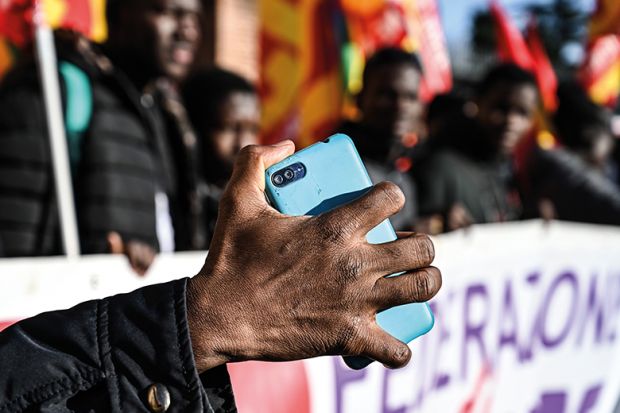Hardly a day goes by when we are not confronted with stories of racism. Accounts in the media of black families targeted on the basis of their skin colour are as routine as they are depressing. Much of this seems unsurprising when a British prime minister describes Muslim women wearing veils as “absolutely ridiculous” for choosing to “go around looking like letterboxes”. Or when the president of the United States is comfortable telling four minority congresswomen to “go back to the crime infested places from which they came”.
It is all too obvious we are living in dark times. Ruha Benjamin contributes to our understanding of the dangers of racism in the 21st century in her illuminating account of how racism and inequality underpin new technologies.
Benjamin reminds us that racism is everywhere – and by its very nature not only seeps into technological advances but is part of how they are designed. From the onset, she writes, “technologies which often pose as objective, scientific or progressive too often reinforce racism and other forms of inequity”. Echoing the Jim Crow laws that allowed segregation to flourish following the abolition of slavery in the US, she refers to this as a “New Jim Code” in which race is seen as a tool, “designed to stratify and sanctify social injustice as part of the architecture of everyday”. She explores and explains how social media platforms and other technologies function as racist enablers. For example, in 2016 Microsoft introduced an AI chatbot with the Twitter name “Tay”. Within 16 hours of its launch, Tay had to be shut down as a result of racist, sexist, xenophobic tweets, including a denial of the Holocaust. In 2015, image recognition algorithms in Google Photos classified a group of black people as “gorillas”.
Just as blatant acts of racism often go unchallenged in our analogue “real” lives, Benjamin demonstrates how social media allow the justification of white privilege and white victimisation. The algorithms controlling social technologies are neither neutral nor objective; they simply reproduce and amplify existing prejudices. One slogan for our dystopian present may be “even robots are racist”, since Benjamin notes how they “represent human bias embedded in technical artefacts”.
The idea that white privilege and white supremacy are embedded in technology is disturbing, yet it reminds us that online tools simply reproduce human prejudice. White privilege has always been a covert practice in which public narratives fail to acknowledge daily inequalities. Benjamin highlights how such covert activity now falls increasingly within the domain of new technologies. The algorithms of AI are the new tools designed to control and manifest white privilege; old racisms are reconfigured with an “invisibility” granted to whiteness that “offers immunity” to its perpetrators.
More than anything, Benjamin’s book suggests the new territory in which the struggle for social justice will take place. It’s a bitter irony that old racisms of President Trump and Prime Minister Johnson find themselves so readily embedded and enabled by modern technologies. No brave new world is on the horizon just yet.
Kalwant Bhopal is professor of education and social justice at the University of Birmingham. Her most recent book is White Privilege: The myth of a post-racial society (2018).
Race After Technology: Abolitionist Tools for the New Jim Code
By Ruha Benjamin
Polity, 296pp, £15.99
ISBN 9781509526406
Published 21 June 2019

